Cadmium Plating
- Grobbies
-
 Topic Author
Topic Author
- Offline
- User
-

Registered
- Posts: 32
- Thanks: 0
Cadmium Plating
28 Jan 2015 22:46
Anybody here ever got any frame parts cadmium plated? Heard it is a very good protector against corrosion, especially in coastal areas. At the moment my frame has been bead blasted and plated. Next up will be paint and clear coat. Fortunately I was able to get this done for free. Still interested to hear if anybody else have had that type of plating done though.
I believe in percussive maintenance.
Attachments:
Please Log in or Create an account to join the conversation.
- davido
-

- Offline
- User
-

Registered
- Posts: 1582
- Thanks: 291
Re: Cadmium Plating
29 Jan 2015 11:15
Ive been thinking about DIYing it. A good way to return all those scuzzy brackets and nuts and bolts etc to their former glory.These are the people to talk to.
www.caswellplating.com/
Good luck
www.caswellplating.com/
Good luck
www.kzrider.com/forum/11-projects/594313-csr1000-project-build
CB550 (1978)
CB500/4 (1972)*
KZ1000CSR (1981)
XT 600E (1999)
TDM900 (2003)
CB550 (1978)
CB500/4 (1972)*
KZ1000CSR (1981)
XT 600E (1999)
TDM900 (2003)
Please Log in or Create an account to join the conversation.
- Tyrell Corp
-
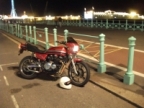
- Offline
- User
-

Registered
- "You were made as well as we could make you"
- Posts: 1650
- Thanks: 261
Re: Cadmium Plating
29 Jan 2015 13:45
Done some nickel plating at home, it is fun!
I sourced anodes and chemistry, but you'd be better just buying a complete caswell kit.
I sourced anodes and chemistry, but you'd be better just buying a complete caswell kit.
1980 Gpz550 D1, 1981 GPz550 D1. 1982 GPz750R1. 1983 z1000R R2. all four aces
Please Log in or Create an account to join the conversation.
- MDZ1rider
-
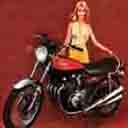
- Offline
- User
-

Registered
- Posts: 381
- Thanks: 118
Re: Cadmium Plating
10 Feb 2015 08:05
Cadmium does offer great corrosion protection, but's also pretty nasty stuff for your health and environment. It's rarely used anymore, except in specialized Military applications. I think it may be banned completely in Europe.
I've been using the Caswell's CopyCad system for 5 years now and I highly recommend it. I primarily use it for zinc plating various hardware. The "Copycad" is really a yellow chromate conversion dip done to zinc plating. You're not going be able to DIY a frame with it. That would take a commercial size tank and over 100 amps of power.
Here's some brake hardware for a Z1 restoration I did with with the Caswell system.
I've been using the Caswell's CopyCad system for 5 years now and I highly recommend it. I primarily use it for zinc plating various hardware. The "Copycad" is really a yellow chromate conversion dip done to zinc plating. You're not going be able to DIY a frame with it. That would take a commercial size tank and over 100 amps of power.
Here's some brake hardware for a Z1 restoration I did with with the Caswell system.
Attachments:
Please Log in or Create an account to join the conversation.
- MDZ1rider
-

- Offline
- User
-

Registered
- Posts: 381
- Thanks: 118
Re: Cadmium Plating
10 Feb 2015 08:26
Here's what the "copycad" zinc plating with a yellow chromate conversion looks like. The left is a new plug, The middle is a new plug with a yellow chromate and right plug is a 40 year old plug with what is probably yellow cadmium plating.
Attachments:
Please Log in or Create an account to join the conversation.
- Nessism
-
- Offline
- Sustaining Member
-

Registered
- Posts: 7770
- Thanks: 3157
Re: Cadmium Plating
10 Feb 2015 14:27
Another Caswell's zinc plating user here. I've done three bikes worth of hardware so far. It works great but is not cheap. By the time you buy the kit, yellow/blue/black chromate dips, extra zinc brightener, and extra zinc anodes, you will be into the kit for enough money to just take your parts to a local plater. When you find that extra piece of hardware you forgot about though having the kit is invaluable.
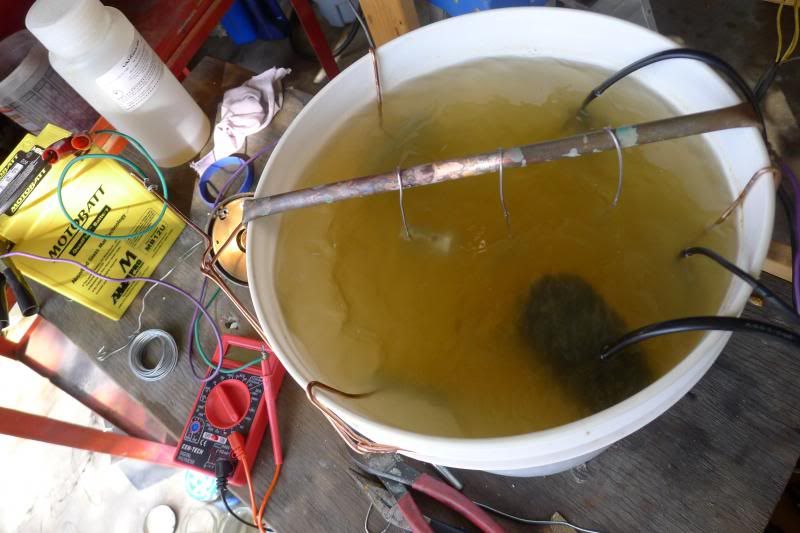
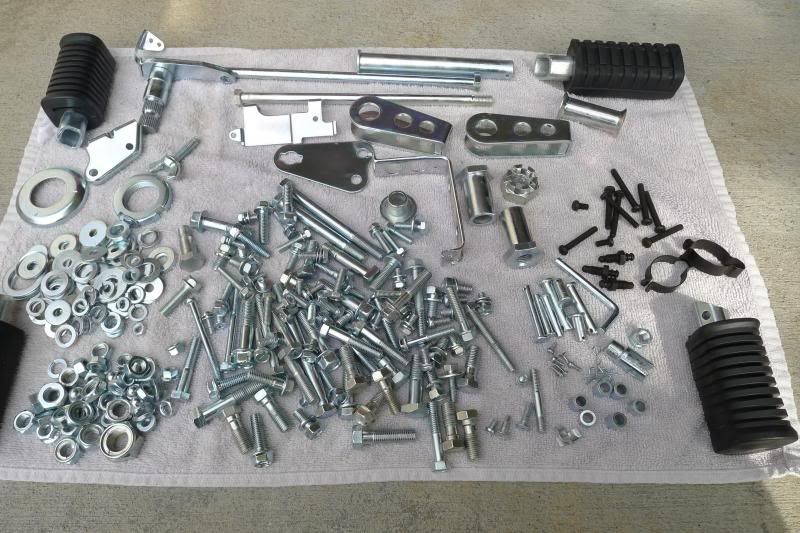
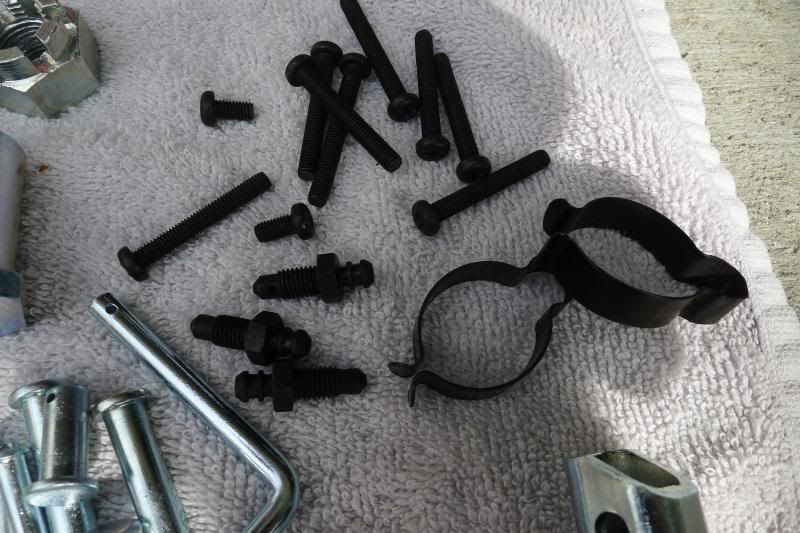
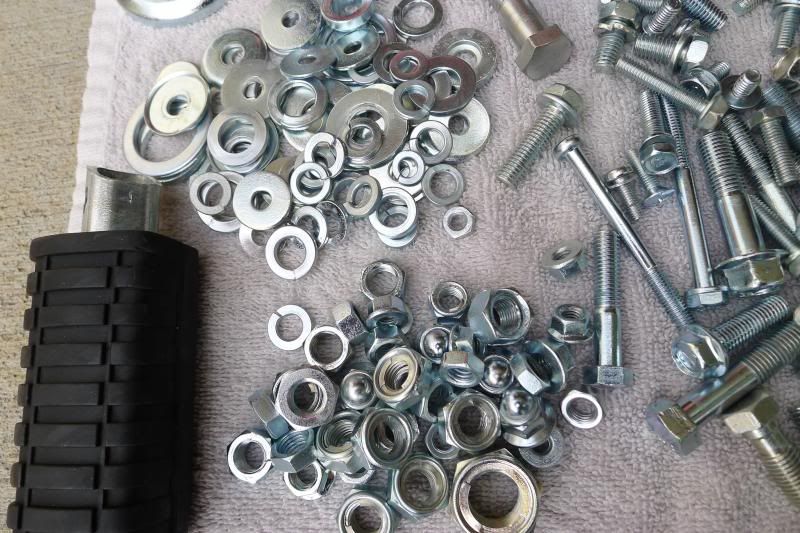
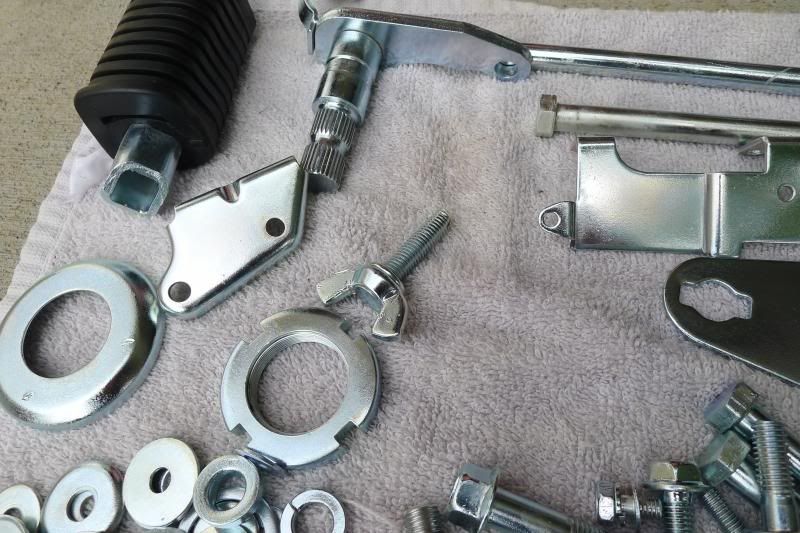
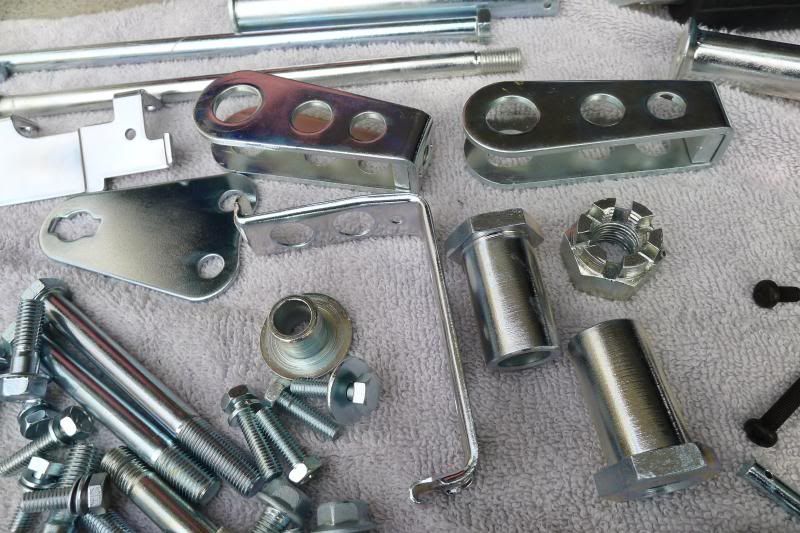
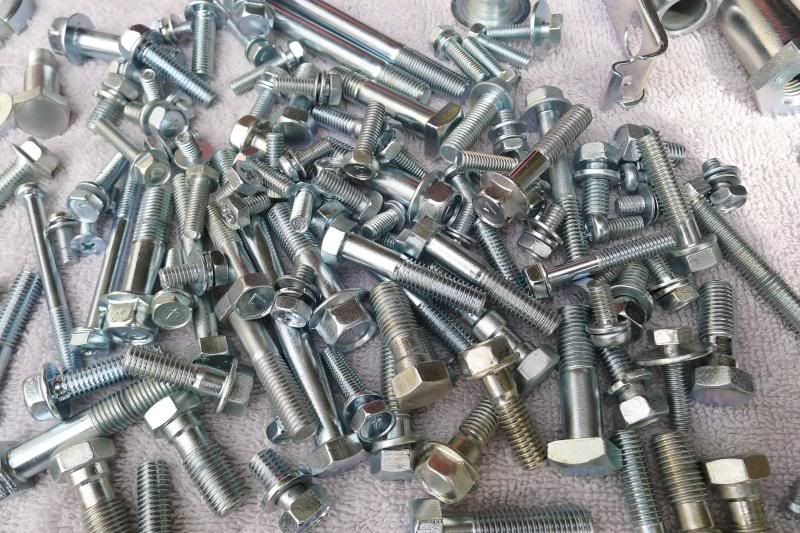







Ed
Carb O-ring Kits : www.kzrider.com/forum/3-carburetor/61807...-o-ring-kits?start=0
www.kzrider.com/forum/faq-wiki/618026-new-owner-things-to-know
1981 KZ750E2
www.kzrider.com/forum/11-projects/604901...z750e-project-thread
Carb O-ring Kits : www.kzrider.com/forum/3-carburetor/61807...-o-ring-kits?start=0
www.kzrider.com/forum/faq-wiki/618026-new-owner-things-to-know
1981 KZ750E2
www.kzrider.com/forum/11-projects/604901...z750e-project-thread
Please Log in or Create an account to join the conversation.
- Jonny
-

- Offline
- User
-

Registered
- woot!
- Posts: 210
- Thanks: 22
Re: Cadmium Plating
13 Feb 2015 10:36
I've been considering this for a while, and since I have a couple of bikes worth of odds and ends that will need some kind of plating over time, the home kit seems like a good choice vs. constantly bringing a stream of nuts bolts and brackets to the plating shop. (I have also yet to find a plating shop in the area, tho I am sure there is one)
I spoke with Caswell Canada this morning, and they were great and answered all my questions. However, I was sort of curious about maybe some sneaky end runs around buying all the flash gear they have for this process...
Ness: I noticed in the background of your photo, you have what looks like a 12v bike battery powering the system. Is that what you used to provide the amperage for the plating/anodizing process? If a well charged bike battery is enough to provide power, I would go that way, instead of either buying their $150 DC power supply. Seems to make sense to me that a fully charged battery should be enough to provide the 3A needed for 20 mins to do the plating? Or is that just being cheap, and I should really get a variable range power supply... Or, do you need something to bring the amperage DOWN to the correct level for plating very small parts.
General: Are the heaters really needed? The caswell plating site suggests that the process should only be around 20 minutes for complete plating of zinc/cadmium. Seems to me that if you have a pot to sacrifice then you could just warm the solution up to around 45C (transfer to non conductive plastic pail) and let it go from there. You shouldn't lose so much heat in the required 20 mins or so. Also, I am making the assumption that the 43C (110F) isn't a strict requirement, rather that this is optimal temperature for the redox reaction. Using a solution at a lower temp is just going to increase the length of time for the reaction to occur, following the general rule of thumb that reactions double in rate per 10C increase in temperature.
Just seeing what others experiences have been with this. I am a biochemist, so this is a little outside my area of expertise, but I don't think I am going too far out on a limb with these assumptions. I just kind of think you can make this work without ALL the expensive bells and whistles they offer.
Cheers!
Jon
I spoke with Caswell Canada this morning, and they were great and answered all my questions. However, I was sort of curious about maybe some sneaky end runs around buying all the flash gear they have for this process...
Ness: I noticed in the background of your photo, you have what looks like a 12v bike battery powering the system. Is that what you used to provide the amperage for the plating/anodizing process? If a well charged bike battery is enough to provide power, I would go that way, instead of either buying their $150 DC power supply. Seems to make sense to me that a fully charged battery should be enough to provide the 3A needed for 20 mins to do the plating? Or is that just being cheap, and I should really get a variable range power supply... Or, do you need something to bring the amperage DOWN to the correct level for plating very small parts.
General: Are the heaters really needed? The caswell plating site suggests that the process should only be around 20 minutes for complete plating of zinc/cadmium. Seems to me that if you have a pot to sacrifice then you could just warm the solution up to around 45C (transfer to non conductive plastic pail) and let it go from there. You shouldn't lose so much heat in the required 20 mins or so. Also, I am making the assumption that the 43C (110F) isn't a strict requirement, rather that this is optimal temperature for the redox reaction. Using a solution at a lower temp is just going to increase the length of time for the reaction to occur, following the general rule of thumb that reactions double in rate per 10C increase in temperature.
Just seeing what others experiences have been with this. I am a biochemist, so this is a little outside my area of expertise, but I don't think I am going too far out on a limb with these assumptions. I just kind of think you can make this work without ALL the expensive bells and whistles they offer.
Cheers!
Jon
'78 KZ 650C2 'Lila'
'71 Norton Commando 750 'Eadie'
St. Catharines, ON (Mostly, anyway...)
'71 Norton Commando 750 'Eadie'
St. Catharines, ON (Mostly, anyway...)
Please Log in or Create an account to join the conversation.
- Nessism
-
- Offline
- Sustaining Member
-

Registered
- Posts: 7770
- Thanks: 3157
Re: Cadmium Plating
13 Feb 2015 18:13 - 13 Feb 2015 18:14
For power I've used a motorcycle battery, mc battery w/12V charger to boost current, and a computer power supply working off the 3V rail. All work.
To set the current I use a load created by old motorcycle turn signals. High current means two turn signals and low current is 1 turn signal.
You can only do some much hardware at one time. When you start plating the part will give off an effervescent bubbling which means the plating is working. You don't want too much bubbling, just a little. If it's bubbling too much I just add a few more pieces to the load, or reduce the lamp load.
The tricks to good plating is using the right combination of brightener, electrolyte temperature, current load, making sure the parts are cleaned, etc. For someone just starting out I'd get one of the Caswell's kits. It includes everything you need, including the heaters. There are electrolyte formulas on the internet but they won't give you the nice bright and shinny parts with Caswell's stuff well.
To set the current I use a load created by old motorcycle turn signals. High current means two turn signals and low current is 1 turn signal.
You can only do some much hardware at one time. When you start plating the part will give off an effervescent bubbling which means the plating is working. You don't want too much bubbling, just a little. If it's bubbling too much I just add a few more pieces to the load, or reduce the lamp load.
The tricks to good plating is using the right combination of brightener, electrolyte temperature, current load, making sure the parts are cleaned, etc. For someone just starting out I'd get one of the Caswell's kits. It includes everything you need, including the heaters. There are electrolyte formulas on the internet but they won't give you the nice bright and shinny parts with Caswell's stuff well.
Ed
Carb O-ring Kits : www.kzrider.com/forum/3-carburetor/61807...-o-ring-kits?start=0
www.kzrider.com/forum/faq-wiki/618026-new-owner-things-to-know
1981 KZ750E2
www.kzrider.com/forum/11-projects/604901...z750e-project-thread
Carb O-ring Kits : www.kzrider.com/forum/3-carburetor/61807...-o-ring-kits?start=0
www.kzrider.com/forum/faq-wiki/618026-new-owner-things-to-know
1981 KZ750E2
www.kzrider.com/forum/11-projects/604901...z750e-project-thread
Last edit: 13 Feb 2015 18:14 by Nessism.
Please Log in or Create an account to join the conversation.
- Tyrell Corp
-

- Offline
- User
-

Registered
- "You were made as well as we could make you"
- Posts: 1650
- Thanks: 261
Re: Cadmium Plating
13 Feb 2015 18:43
The power supplies seem expensive for what they are; as above I used a motorcycle battery, and some 3W bulbs to reduce the current - this bit is important, to much current and it doesn't work right, certainly with nickel plating anyway. I got a feel for it with a bit of practice, but you can calculate the surface area of your parts and set the current to that.
Chrome plating isn't really an option, the chemistry is very dangerous and the last three professional platers in my area got closed down by health and safety. Bright Nickel looks almost the same, is do-able at home and seems quite durable.
Caswell sell the consumables and chemistry separately, so plastic containers, power supplies, wire, tank heater is all bits I had already.
Best thing about plating is turning a pile of rusty old shit into something that looks really nice, without waiting for weeks and having bits lost.
For bright plating, you need a mirror polished surface to start with, which is another process in itself.
Chrome plating isn't really an option, the chemistry is very dangerous and the last three professional platers in my area got closed down by health and safety. Bright Nickel looks almost the same, is do-able at home and seems quite durable.
Caswell sell the consumables and chemistry separately, so plastic containers, power supplies, wire, tank heater is all bits I had already.
Best thing about plating is turning a pile of rusty old shit into something that looks really nice, without waiting for weeks and having bits lost.
For bright plating, you need a mirror polished surface to start with, which is another process in itself.
1980 Gpz550 D1, 1981 GPz550 D1. 1982 GPz750R1. 1983 z1000R R2. all four aces
Please Log in or Create an account to join the conversation.
- MDZ1rider
-

- Offline
- User
-

Registered
- Posts: 381
- Thanks: 118
Re: Cadmium Plating
16 Feb 2015 08:47
If you've got an electronic surplus dealer in you area, check with them. I found a Lab 0-12v 6 amp constant current adjustable power supply for $25.00. I also found 2ea. 3amp power supplies for $10.00 that I bridge thru a rectifier if I need even more current. An adjustable PS makes it easy to just turn the knob until you see bubbling or "fizzing". From experience, I know adjusting the current to get .3 volts of output from the PS is about right. I adjust the current up/down as I add or remove pieces to maintain the same voltage.
Most commercial platers do batch barrel plating with a minimum charge. Last I checked, the plater in my area was $80.00. If you do all your parts at once, that's not so bad. However, forget one bolt and it's $80 more. Plus your parts get all jumbled together. I like to bag and tag sections as I work. I bag all the nut/bolts for an item with that item. It speeds reassembly and I'm sure I use the correct hardware. I can't do this with commercial batch plating. There's are some pieces that a commercial plater won't touch. Nessism showed footpegs. I've done brake line ends, tach/speedo cable ends, rim locks, shifter and kickstater shaft ends. I'm thinking about plating the inside of a gas tank by filling it with the solution and applying the current to the tank itself as the cathode. Once you get set up, you'll find all kinds of uses you never thought of.
The "exact" temperature is not critical, but it does help to be in the range to get the best results. I wrapped the plastic buckets with water heater insulation to help maintain the heat. You can find heaters and other components from other sources. One of my Caswell heaters died and the circulation pump quit after years of use. I replaced with fish tank supplies from a local pet store. I still think you'll come out cheaper starting with the complete kit
Most commercial platers do batch barrel plating with a minimum charge. Last I checked, the plater in my area was $80.00. If you do all your parts at once, that's not so bad. However, forget one bolt and it's $80 more. Plus your parts get all jumbled together. I like to bag and tag sections as I work. I bag all the nut/bolts for an item with that item. It speeds reassembly and I'm sure I use the correct hardware. I can't do this with commercial batch plating. There's are some pieces that a commercial plater won't touch. Nessism showed footpegs. I've done brake line ends, tach/speedo cable ends, rim locks, shifter and kickstater shaft ends. I'm thinking about plating the inside of a gas tank by filling it with the solution and applying the current to the tank itself as the cathode. Once you get set up, you'll find all kinds of uses you never thought of.
The "exact" temperature is not critical, but it does help to be in the range to get the best results. I wrapped the plastic buckets with water heater insulation to help maintain the heat. You can find heaters and other components from other sources. One of my Caswell heaters died and the circulation pump quit after years of use. I replaced with fish tank supplies from a local pet store. I still think you'll come out cheaper starting with the complete kit
Please Log in or Create an account to join the conversation.
Moderators: Street Fighter LTD
